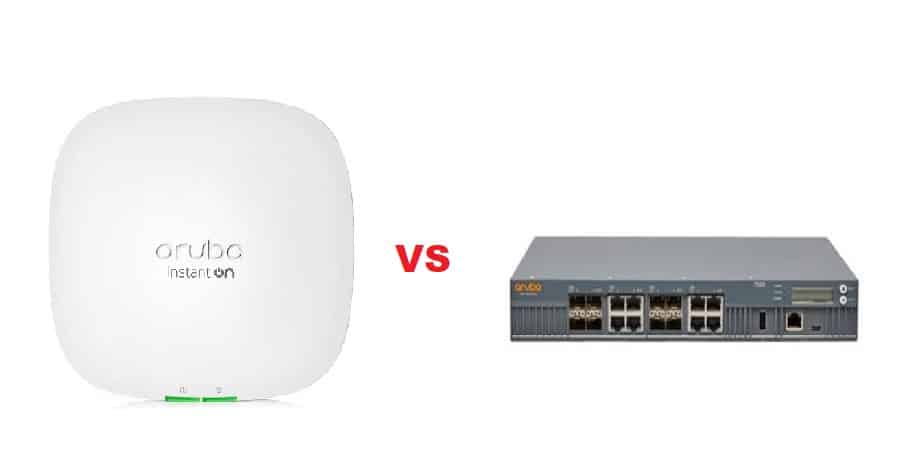
One of the most important services that a networking company can provide is network management and control. When it comes to these two features, both the Aruba IAPs and controllers have gained popularity. However, users have been unable to decide whether to purchase both products.
The features and operation of the instant APs are similar to those of the Aruba controller, but both must be deployed in your network. We’ll go over a general comparison of the two because users have frequently asked about Aruba instant AP vs controller.
Aruba Instant AP vs Controller Comparison
Aruba Instant APs
Aruba instant-on access points are an excellent choice for high-speed internet and expanded capacity. But the question here is whether instant access points can replace Aruba controllers. To put it mildly, the IAPs are comparable to what the Aruba controller has to offer, but they are not the controller. This means that by purchasing the IAPs, you will be compromising certain controller features.
Moving on from the previous point, IAPs are useful, but when it comes to managing multiple clients, an IAP cluster may not perform as well as a controller. This is because while 16APs can be scaled, the connection is limited to an L2 subnet. If you have large L2 subnets, you may experience network issues and bottlenecks, which is not recommended when working in a large or industrial environment.
To proceed with the discussion, one significant difference between the IAP and the controller is its VLAN requirements. As previously stated, both can be used to manage a clustered network with multiple VLANs, but the efficiency of management is what distinguishes them. Having said that, an IAP would necessitate the extension of your network’s VLANs to the edge. However, this is a redundant process that can cause complications when attempting to manage the system. A controller, on the other hand, only requires you to extend one VLAN to the edge and the other can be tunneled to it. This saves you a lot of trouble and long connections between clients.
Aruba Controller
When it comes to the features of the Aruba controller, you’ll be surprised to learn that it can do everything an IAP can do while also simplifying your network for better management and control. A controller, as mentioned in the IAP section, will simplify the structure of your VLANs so you don’t have to worry about extended edge connections. Aside from that, the controller allows you to easily deploy and manage your wireless and wired networks. This feature, however, cannot be claimed in the IAPs. Furthermore, if you believe you will need to extend your network or add more VLANs but want to manage them from a physical distance, the Aruba controller will provide you with Remote functionality.
When it comes to managing multiple networks, access points are great when you don’t have a large industrialist environment, but they don’t always work smoothly or at all. When you say “different networks,” you’re referring to admin, guest, or internal networks. You can, however, claim this feature in the Aruba controller. You have the option of using multiple ports as ‘legs’ to connect to different networks. However, when it comes to troubleshooting, one thing must be mentioned: a controller can be difficult to work with. Assume you have a tunneled VLAN that appears to be having a problem. Because all VLANs are connected to one edged VLAN, the controller can be regarded as a central failure. However, because they are independently extended to the edge, all VLANs in the IAP act as their controller. This means that even if one VLAN fails, your entire network system will not collapse because every AP will be operational except for the infected one.
The Final Verdict:
We have discussed the benefits and drawbacks of working with an IAP or controller to manage your VLANs. So, if you have a large network system and want to manage it without complicating the network design with extra features, an Aruba controller is the way to go.